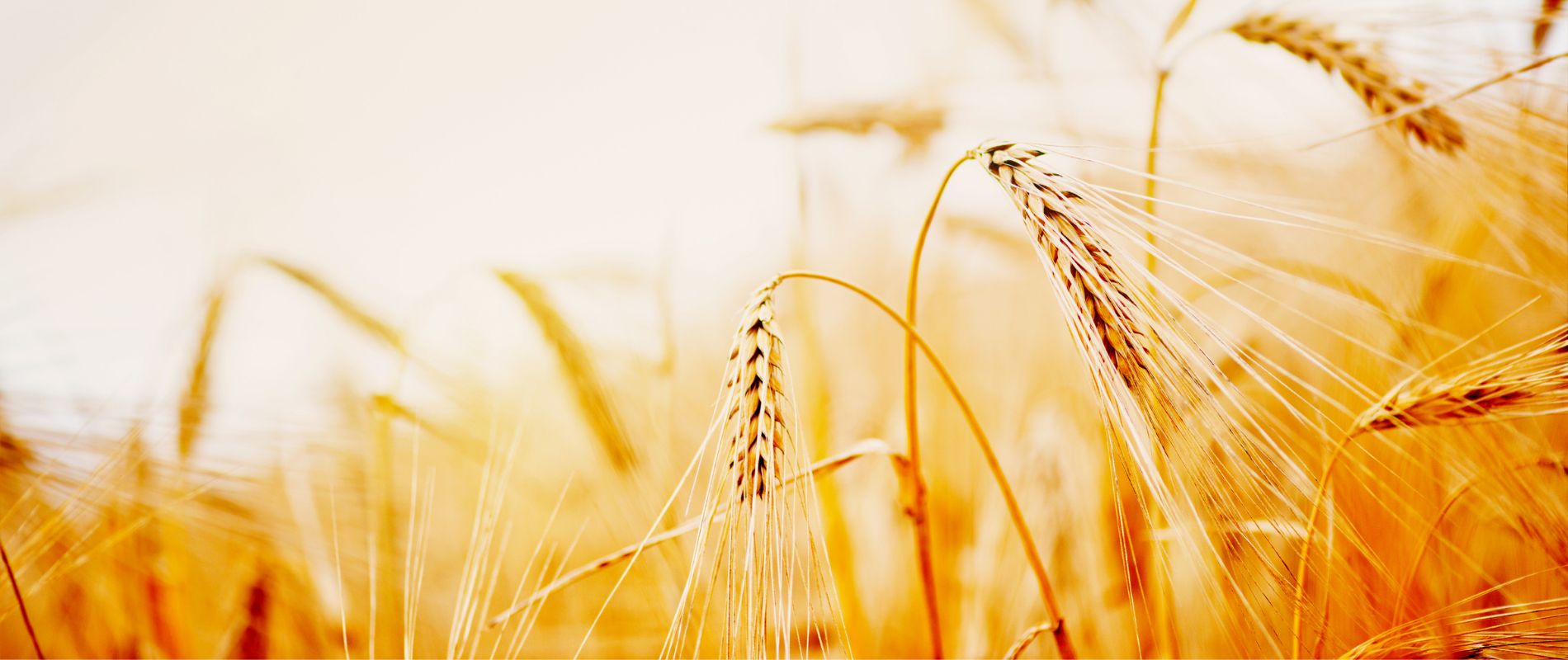By Pia Cunningham.
While diet varies around the world, no one can deny the importance of staple grains. Wheat comprises 20 percent of all human calories and protein*; it is of great importance for feeding the human population.
Climate change continues to raise average temperatures, increase the occurrence of extreme weather events, and change patterns of precipitation. Like most food production, wheat is threatened by the changing ecosystem. Simultaneous to the increasing threats on crops, the rising global population continues to demand more and more food. How can we provide food for a growing population while responding to impacts from climate change?

Bob Furbank, and Andrew Scafaro
Prof Owen Atkin, Director of CEAT, is leading a team of ANU academics Prof Bob Furbank and Dr Andrew Scafaro, to tackle this challenge. The ANU Plant Science team has recently been awarded a grant for their project “Discovering thermally stable wheat through exploration of leaf respiration in combination with photosystem II capacity and heat tolerance”. They will be collaborating with the International Maize and Wheat Improvement Center (CIMMYT) in Mexico and the University of Sydney, Narrabri campus.
They are one of five international teams who were successful in being granted funding from Foundation for Food & Agriculture Research (FFAR). The proposals were submitted in response to a call by the Heat and Drought Wheat Improvement Consortium (HeDWIC), led by CIMMYT and other global partners. This grant is an exciting opportunity to contribute to the growing need for thermally stable crops that can tolerate the threats of climate change.
To explore leaf respiration, the team will compare dark respiration and respiration in the light. Photosynthesis is the process of using carbon dioxide, water, and light energy to create sugars and oxygen. Cellular respiration uses these sugars and oxygen to create the energy rich compound ATP. ATP is the molecule responsible for storing energy in plants and animals. This energy allows the plant to function, in this case, make grain for us. In the process of cellular respiration, water and carbon dioxide are released.
Dark respiration refers to the rate of respiration required to maintain plants’ function while it is not photosynthesising; for example, at night. Photosynthesis captures carbon dioxide, it can be seen as a profit. Because respiration releases carbon dioxide, it can be seen as a loss. Hence, the lower the rate of dark respiration and the higher the rate of photosynthesis in the light, the more efficient the plant. In other words, a higher profit and a lower cost makes the plant more efficient. This ratio will show the team how efficiently the wheat assimilates carbon.
To add to this indicator, they will measure leaf hyperspectral signatures. This is a measure of light reflectance that can show photosynthetic capacity and plant stress. Hence, field grown wheat experiencing drought and heat stress can be investigated with high throughput for photosynthetic efficiency and capacity. Together, the indicators could be capable of screening for wheat lines that are more resistant to drought and heat.
Congratulations to Prof Atkin and his team, we are very excited to see the start of this promising project. See relevant profiles or read more about the grants below.
Profiles
Prof. Owen Atkin: https://biology.anu.edu.au/people/academics/owen-atkin
Prof. Bob Furbank: https://biology.anu.edu.au/people/academics/robert-furbank
Dr Andrew Scafaro: https://biology.anu.edu.au/people/academics/andrew-scafaro
References
- Azcón-Bieto, J. and Caballero, A. (1993) ‘Photosynthetic and respiratory efficiency’, in Hayward, M.D. et al. (eds) Plant Breeding: Principles and prospects. Dordrecht: Springer Netherlands (Plant Breeding Series), pp. 473–484. doi:10.1007/978-94-011-1524-7_28.
- * Doody, A. (2022) ‘International scientists awarded grants supporting the HeDWIC-FFAR project to boost climate resilience in wheat’, CIMMYT, 2 February. Available at: https://www.cimmyt.org/news/international-scientists-awarded-grants-supporting-the-hedwic-ffar-project-to-boost-climate-resilience-in-wheat/ (Accessed: 15 March 2022).
- Fu, P. et al. (2019) ‘Hyperspectral Leaf Reflectance as Proxy for Photosynthetic Capacities: An Ensemble Approach Based on Multiple Machine Learning Algorithms’, Frontiers in Plant Science, 10. Available at: https://www.frontiersin.org/article/10.3389/fpls.2019.00730 (Accessed: 15 March 2022).
- Kim, Y. et al. (2010) ‘Hyperspectral Image Analysis for Plant Stress Detection’, in. doi:10.13031/2013.29814.
